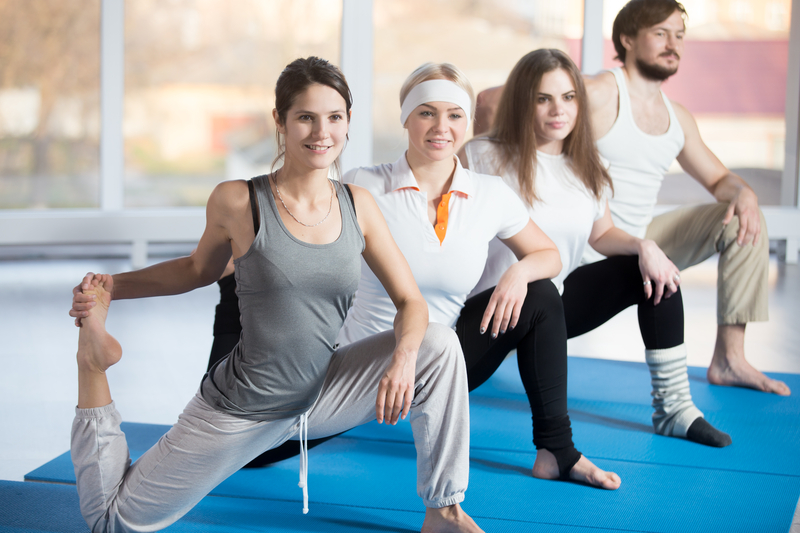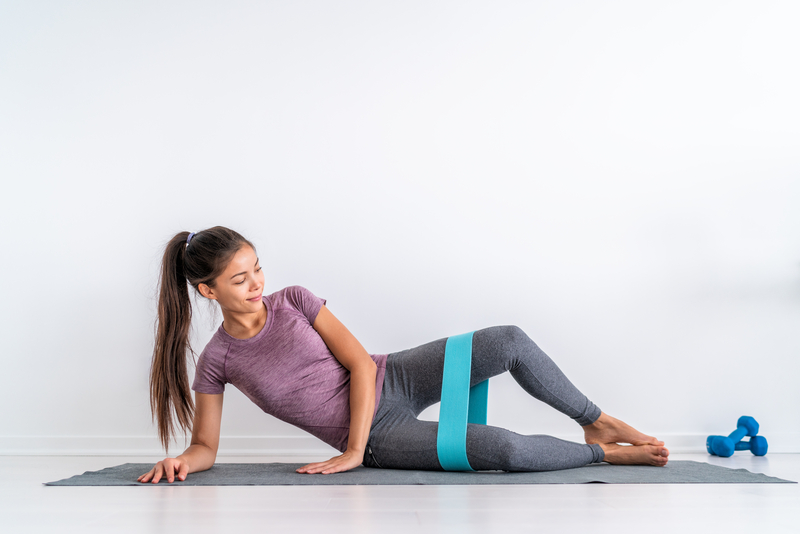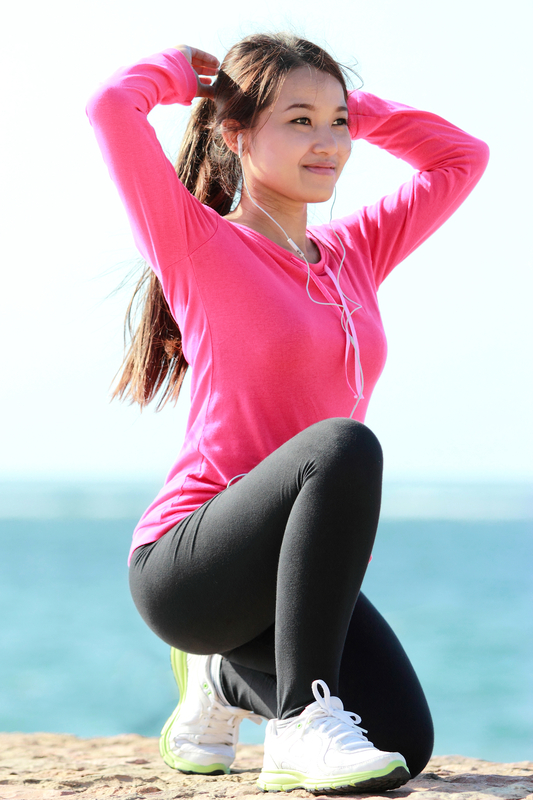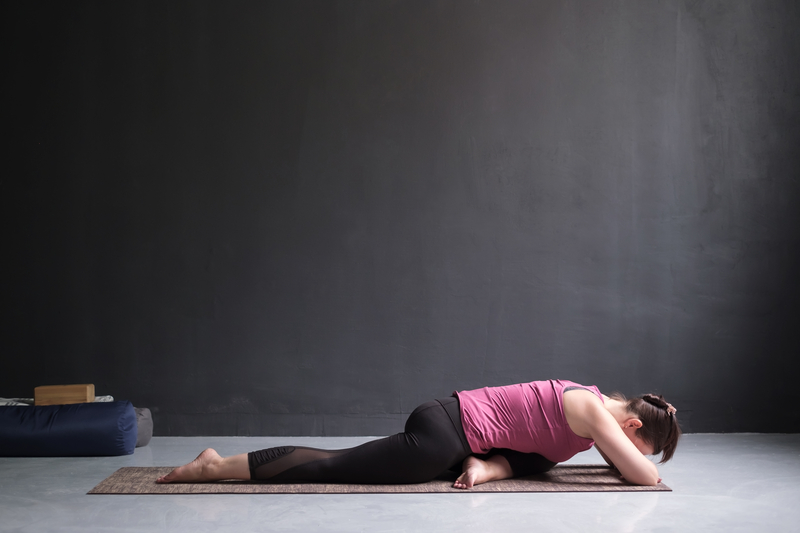7 Hip Flexor Stretches & Exercises

Hip flexors are often either overlooked or overworked, unintentionally, of course. Those of us who sit more than we should (virtually everybody) are especially susceptible to tight hip flexors. And if nothing is done to remedy the situation, you can find yourself in a world of pain and ripe for injury. In other words, if you like to walk, run, bike, climb stairs, play sports, or simply exist pain-free, then hip flexor stretches are for you.
What Are Hip Flexors?
Hips are complicated. With 21 muscles that provide support and the ability to move in multiple planes, your hip flexors are just part (albeit an important part) of the picture. The hip flexors themselves are comprised of five main muscles:
- The psoas major muscle is connected to your backbone and leg (which explains the correlation between tight hip flexors and back pain). This muscle snakes through the pelvic area to attach to the front of your thigh.
- The rectus femoris is a hip flexor muscle that connects your pelvis and your knee. It allows smooth movement when bending at the hip and knee as you might do in a squat or lunging movement.
- The sartorius muscle is a long, thin muscle that also runs from your pelvis to your knee and aids in bending knees and lifting your legs.
- The pectineus muscle helps you rotate your leg and assists when it comes to adduction and flexing at the hips. This is also your groin area.
- Lastly, the iliacus muscle starts at the pelvis and also attaches to your thigh, enabling you to rotate your legs in all planes.
How Do Hip Flexors Help You Move?
Since your hip flexors allow you to move and lift your legs and knees while also helping with bending motions in the knees and hips, they are major players when it comes to many movements. In fact, you probably use them a lot more often than you might think. Any movement that requires you to lift your leg or bend at the hips engages the hip flexors. And that includes stabilizing you during other movements as well.
Some examples of your hip flexors in action include walking, jogging, sprinting, leg lifts, walking up stairs, kicks, jumps, squats, and lunges, as well as abduction and adduction movements of your thighs.
How Do You Know if Your Hip Flexors Are Tight (and Why It Matters)?
Hip flexors can be weak or dominant, painful, or tight. Depending on what’s going on, this can, and does, affect your alignment, not just in your hips but throughout your lower back and pelvic region as well as your lower limbs (like knees and ankles).
Tight hip flexors can manifest in many different ways, including lower back pain, weak glutes and hamstrings, hip pain, and even knee pain. Altered movement patterns that develop due to weakness, dominance, and misalignment can, understandably, result in further misalignment, chronic pain, and injuries.
How to Get Started with Hip Flexor Stretches and Hip Flexor Exercises
As with any stretching exercise, always begin with a proper warm-up. It’s important that your muscles, ligaments, and tendons remain pliable to get the most from your stretching routine. You may want to do hip flexor stretches and exercises after your cardio or resistance training to ensure they are warmed up and ready to go.
Lying Banded March—start by sitting and wrapping a resistance band around both feet. Lie back with your knees bent and hands by your sides. Next, lift both legs off the floor and start a “marching” type of motion. That is, bring your right knee slowly to your chest while keeping your left leg straight. Then, as you straighten your right leg, bring your left knee up to your chest. Continue this marching motion for ten repetitions on each side.
Lunge and Twist—this is a great stretch to help release tight hip flexors. Begin by taking a giant step forward with your right leg. Bring your left (rear) knee down to rest on the ground. Twist your upper body to bring your right elbow around until it rests on the inside area of your right thigh. If you’re up for it, swing your left arm straight out, parallel to the floor, and behind you as far as you can. Hold this stretch for 5 seconds, move back to the start, and then repeat on the opposite side.

Straight Leg Raises—the easiest way to work your iliopsoas and rectus femoris is to lie on your back with your legs out straight, arms by your sides for balance. Next, bend your left knee and raise your right leg to a 45-degree angle. Engage your core as you do this for an assist (your hip flexors are doing most of the work). Hold this position for a count of five, and then lower your leg to the start. Repeat five times on the right side and then switch to your left.
Adduction/Abduction—these movements will also engage the hip flexor muscles. If you have access to an adduction/abduction machine at a fitness facility, you can use that. If not, try using a resistance band to mimic the abduction movements. You can do a Clamshell exercise by lying on your left side and wrapping a resistance band around your knees. Bend your legs, keeping your knees on top of one another. Rotate your right leg at the hip to bring your knee upward toward the ceiling. Hold for three seconds. Slowly lower your knee back to the start, resisting along the way. Do 10 repetitions for your right leg and then switch to your left side.

Butterfly Stretch—this will help stretch the hip flexors that aid in adduction movements. Sit with your legs bent, knees down, and out to your sides, and touch the bottom of your feet together in front of you. Bring your feet in as close to the center of your body as you can while pushing your knees down toward the ground with your elbows. Hold this stretch for five seconds at a time.

Kneeling Stretch—this is an oldie but a goodie. Start with a soft pad on the ground if need be. Kneel on both knees, get up onto the balls of your feet, and rest your glutes on your heels. Place your hands on the mat in front of you and bring your right leg between your hands to place your foot on the ground in front of you (your knee will be bent at a 90-degree angle). Next, bring your torso to an upright position and move your left leg out behind you until it is comfortably straight. Place your hands on your right thigh and gently lean forward, feeling the stretch through your hips and hip flexors. Hold for 10 seconds and then repeat on the opposite side.

Pigeon Stretch—You can easily move into the pigeon stretch from the kneeling stretch position (above). Simply place your hands on the floor on each side of your right bent leg, then slide that foot across toward the left until your knee is on the ground. Keeping your body aligned, bring your upper body down over your right leg and reach your arms out in front of you to feel a great stretch.

Practice your hip flexor stretches several times a week. Not only will you enjoy added hip mobility and functionality but you’ll avoid unnecessary stiffness, pain, and perhaps even injury.




 7 Signs Your Body is Seriously Low on Collagen (not just wrinkles)
7 Signs Your Body is Seriously Low on Collagen (not just wrinkles) Health Expert: "Turmeric Doesn't Work (unless...)"
Health Expert: "Turmeric Doesn't Work (unless...)" 3 Warning Signs Your Probiotic Supplement is a Total Waste
3 Warning Signs Your Probiotic Supplement is a Total Waste

